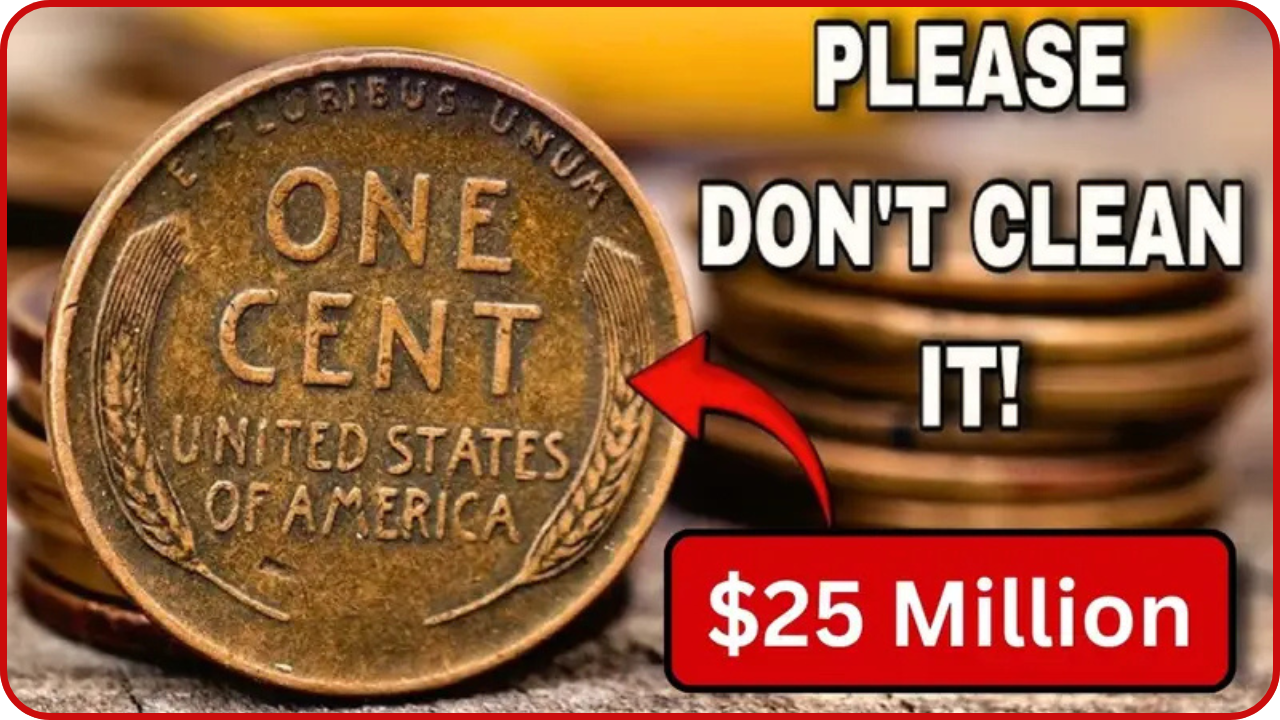You might have a treasure hiding in your pocket change! The Lincoln Wheat Penny, a small coin with a big history, has some rare versions that could be worth millions. Before you spend that old penny, let’s explore why certain ones are so valuable, how to spot them, and what makes them special. Here’s a simple guide to help you figure out if your penny is just pocket change or a life-changing fortune.
A Coin with a Story
The Lincoln Wheat Penny was first made in 1909 to celebrate Abraham Lincoln’s 100th birthday. It was designed by Victor David Brenner and has his initials, V.D.B., on some early coins. These pennies were minted until 1958, with two wheat stalks on the back, giving them the “Wheat Penny” name. While most are worth only a cent, a few rare ones have sold for jaw-dropping prices, like $25 million for a single penny at auctions! The value comes from unique errors, rare dates, or special mint marks.
What Makes a Penny So Valuable?
Certain Lincoln Wheat Pennies are rare because of mistakes made during production or low minting numbers. For example, the 1909-S V.D.B. penny is super rare—only 484,000 were made, and collectors love it. Another gem is the 1943 Bronze Penny. In 1943, pennies were supposed to be made of steel to save copper for World War II, but a few bronze ones slipped through. These errors make them incredibly valuable. Other pennies, like the 1955 Double Die, have a doubled image, making them stand out and worth thousands.
| Year | Mint Mark | Special Feature | Estimated Value |
|---|---|---|---|
| 1909 | S | V.D.B. Initials | $100,000 – $2M |
| 1943 | None/S/D | Bronze Error | $1M – $25M |
| 1955 | None | Double Die | $1,000 – $125,000 |
How to Spot a Million-Dollar Penny
To find out if your penny is valuable, grab a magnifying glass and check these details:
- Year and Mint Mark: Look at the date and the small letter below it. “S” means San Francisco, “D” means Denver, and no letter means Philadelphia. Rare years like 1909-S or 1943 are a good start.
- Material: Most 1943 pennies are steel, so if yours is bronze, it’s a big deal. Use a magnet—if it doesn’t stick, you might have a winner.
- Errors: Check for doubled text or images, especially on 1955 pennies. The doubling is clear under magnification.
- Condition: Coins in great shape (shiny, no scratches) are worth more. Collectors call this “mint condition.”
If you think you have a rare one, take it to a professional coin grader like PCGS or NGC. They’ll verify it and tell you its value.
Where to Find These Pennies
You don’t need to dig through a pirate’s chest to find a rare penny. Check your loose change, old jars, or family coin collections. Some people have found valuable pennies in bank rolls or inherited boxes. Flea markets, estate sales, or even your couch cushions could hide a gem. But don’t get your hopes too high—most pennies are common. Still, it’s worth a quick look, especially for coins from the 1900s to 1950s.
What to Do If You Find One
If you think you’ve got a rare penny, don’t clean it! Cleaning can ruin its value. Store it in a plastic coin holder to keep it safe. Then, contact a reputable coin dealer or auction house. They can help you get it appraised or sold. Stories of people finding rare pennies are real—one person found a 1943 Bronze Penny in their change and sold it for millions! Your penny might not be worth $25 million, but even a $1,000 penny is a nice surprise.
A Fun Hunt for Everyone
Hunting for rare Lincoln Wheat Pennies is like a treasure hunt anyone can join. It’s exciting to think a penny in your pocket could change your life. So, next time you see an old penny, take a closer look. Check the date, mint mark, and condition—you might just have a tiny fortune. Whether you’re a collector or just curious, the Lincoln Wheat Penny proves that sometimes, the smallest things can hold the biggest value.
